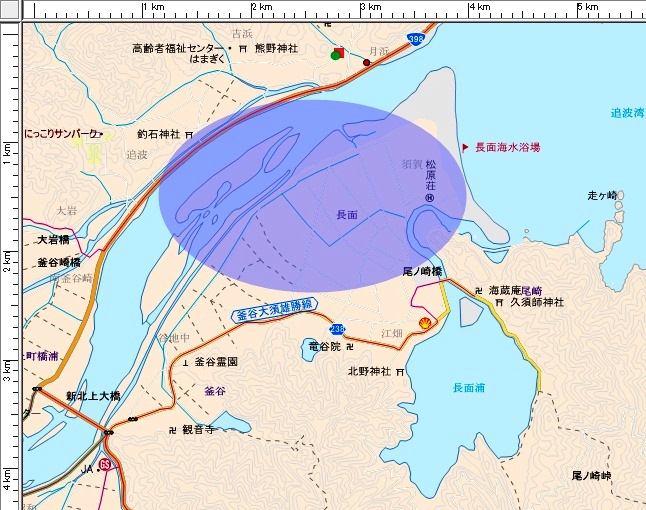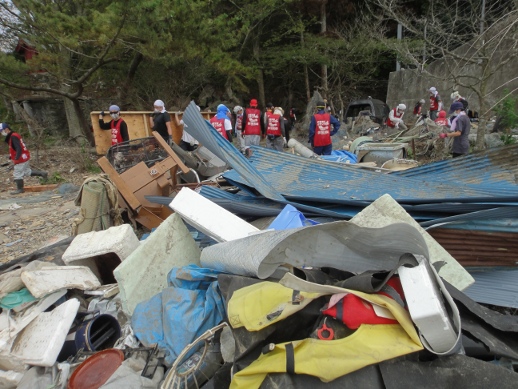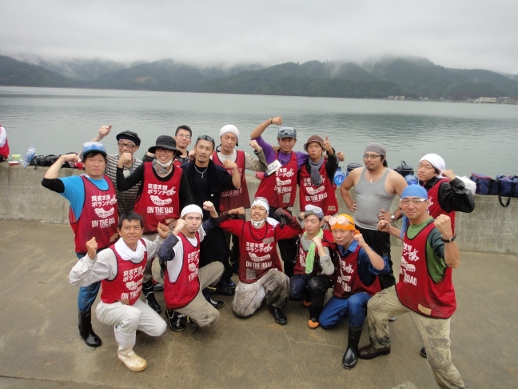In June of 2010, I cycled along Tohoku’s Kitakami River to Ishinomaki, Miyagi, as preparation for a cycling tour. When heard and saw on the news what changes the March 11 earthquake and tsunami had brought to the once idyllic scenery and to the lives of the people there, I was literally lost for words.
In mid-August, I had the chance to join some volunteer activities in the area, so I headed back up. After spending a few days there, I left Ishinomaki with the impression it still has a long way to go before the restoration is complete, and volunteers would continue to be in great demand for some time.

The area near the mouth of the Kitakami River was one of the areas most stricken by the tsunami. You see significant subsidence of land and flooding in the area highlighted in purple. Some places are still left completely covered with rubble.

A house which went adrift by the tsunami still sits in water five months after the disaster. It is only two months since the bridge over to the area was rebuilt and support activities began.

Together with other volunteers, I helped sort and remove massive amounts of rubble left by ebbing tsunami waves. This is a job construction machinery cannot take on, and 30 or so volunteers and one day of work can make a big difference.
The volunteers worked in sludge deposited on subsided land. The elderly house owner has been living in a shelter, and he wonders if it might be the last place he lives. Seeing the rubble removed and their old houses cleaned, slowly but steadily, some evacuees are said to have now started to consider returning to their homes.
The message on the side of a bus transporting volunteers.

Many organizations have volunteers working in disaster areas. I joined ON THE ROAD (www.saigaishien.jp/volunteer/), an organization with about average 100 volunteers working in Tohoku. I was amazed by the high energy of my young co-workers, many in their 20s.
Web: www.saigaishien.jp/volunteer/





